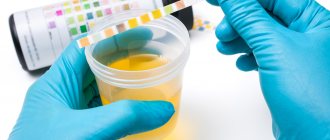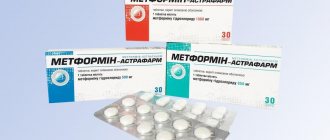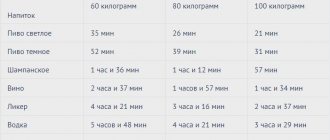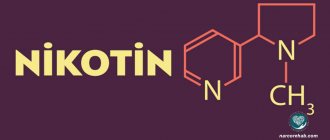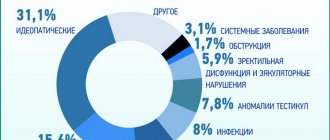Who needs to pass
A laboratory drug test will help relatives (parents) confirm or refute fears about a loved one. Pharmacy rapid urine tests, which have become popular recently, can be misleading. They are inexpensive, but are only suitable for detecting “fresh” drug use (1-3 days ago). Biomaterial such as urine can be easily replaced or diluted. Therefore, it is better to choose a clinical analysis of venous blood, the falsification of which is unlikely.
Symptoms of human drug use:
- “empty” detached look;
- dilated or constricted pupils that do not respond to light;
- clumsiness, absent-mindedness, slowness;
- an unkempt appearance that is not typical for a given person;
- slurred, confused speech;
- nervousness, rudeness;
- constantly wearing long sleeves to hide punctures;
- a sharp change in the circle of friends;
- inflated and unfounded monetary requests.
Finding similar behavior in your child or close relative serves as an excuse to persuade him to take a drug test. Some psychoactive substances are contained in medications. The fact of their use will also be detected during a blood test.
To perform a hemotest, you need to make an appointment at the clinic. If necessary, the analysis can be done under an anonymous name.
In some cases, drug testing is required to obtain a job. It can also become an important argument in court. But in order for the results of the analysis to have legal force, it must be carried out within the framework of a forensic examination.
Advantages of conducting research in our clinic
We use test systems from leading foreign manufacturers, therefore we guarantee accuracy, high sensitivity and specificity.- Affordable price.
- Speed of implementation - the study takes 15-20 minutes.
- Painless.
- No contraindications.
- It can be performed without the presence of the patient - you can simply bring a urine sample to our clinic.
Still have questions? Do you want to dispel doubts about whether your loved one uses drugs? Call us on +7 .
We work around the clock. Need some advice?
OR CALL A DOCTOR
CALL!
+7
Types of analyzes
The key criterion for choosing a diagnostic method is how long it can determine the duration of drug use. Sometimes it is necessary to demonstrate the fact of drug intoxication in cases of an accident or fight. In this case, we need a method that responds to a single drug intake. If the goal is to detect whether a person has an addiction, a different approach will be needed.
Clinics offer two approaches to testing blood for drugs. They're called:
- quarterly analysis;
- chemical-toxicological analysis.
Table. Methods for testing blood for drugs.
| Name of the study | Types of drugs identified | Description | Advantages | Flaws |
| Quarterly analysis | Amphetamines, cocaine, opiates, barbiturates, cannabinoids, ephedron. | Antibodies produced during the conversion of narcotic drugs are detected. They remain in the blood for up to 3-4 months. Suitable for establishing dependence on a certain class of substances, rather than a one-time use of drugs. | Information content of the test, 3-4 months after drug use. | Expensive. Does not indicate the fact of taking the drug at the time of drug intoxication. It takes some time to produce antibodies. Does not respond to a single dose of the drug (1-2 times). |
| Chemical-toxicological | 10 classes of substances: amphetamines, cocaine, opiates, barbiturates, buprenorphine, propoxyphene, methadone, methaqualone, phencyclidine, synthetic cannabinoids. | Using special reagents, the presence of narcotic drugs in the blood that were taken no longer than 1-3 days ago is determined. Shows drug concentration. | Simple and inexpensive laboratory method, high reliability. Responsive to a single dose of the drug. The result of the analysis is a legal fact of drug use for use in a court. | No more than 48-72 hours should pass from the moment of administration. |
These studies cannot be called rapid tests. They are carried out exclusively in the laboratory. The result will be ready after 2-10 days, depending on the chosen method.
It is recommended to give preference to clinics with a developed network that has all the necessary materials. This is important, because new products are being produced on the drug market, for which you need to have the appropriate reagents.
Principle of the study
One test identifies the five most common psychoactive substances. This:
amphetamine;- methamphetamine;
- marijuana;
- morphine;
- cocaine.
Once in the body, drugs quickly spread through tissues and biological fluids and undergo metabolic reactions. Psychoactive substances can be found in urine, blood, saliva, hair, and nails. The rate of elimination of these compounds depends on the intensity of metabolism, the dose of drugs taken and the duration of addiction (psychoactive substances gradually accumulate in the body). A urine sample is required for the test. The biological fluid is collected in a clean, sterile container; usually a special container is used for this purpose. It is possible to store the sample in the refrigerator for 2-4 hours, but before performing the analysis, the jar of urine is kept at room temperature for 20-30 minutes. The test system consists of five strips placed in a plastic container.
Opposite each is a sample cell and the abbreviated name of the drug being tested is indicated:
COC – cocaine;- MET – methamphetamine;
- AMP – amphetamine;
- MOP – morphine;
- THC – marijuana.
The principle of testing is based on immunochromatographic analysis technology. The test strips are divided into two zones. A conjugate of antibodies and colloidal gold is applied to the test membrane, and a conjugate of a narcotic compound and a control reagent are applied to the membrane. Using a laboratory pipette, place a few drops of urine into each cell. Due to the capillary effect, the biological fluid rises along the strip. Psychotropic substances combine with the conjugate on the membrane, which prevents staining of the test area. Next, the antibodies contained in the urine react with the control reagent - a bright red stripe appears.
Preparing for analysis
Testing blood for drugs does not require any special preparation. It is necessary to follow the general rules of behavior before a blood test:
- the procedure is done in the morning on an empty stomach;
- the day before, it is advisable to give up alcohol and smoking;
- avoid taking medications;
- You can’t drink tea, coffee, just a little clean water.
For example, Aspirin can mask the presence of certain substances in the blood. Too much water may affect their concentration in the analysis results.
Is it possible to cheat the test?
If you are going to test for drugs, there are several ways to hide traces of drug use:
- Anonymous detoxification. By contacting the narcology department, you can purify the blood using droppers. The service is paid.
- Removal with home remedies. You need to drink more water, visit the bathhouse and actively engage in sports.
If it is not possible to prepare in advance, then some people replace the material with “clean” material or put a little soda in a jar of urine.
These methods do not give 100% results. Even after detoxification, the test may be positive.
How is blood taken for examination?
For drug testing, you need venous blood, which is collected in a clinical setting. The puncture is preceded by treating the skin of the person being tested with an alcohol-free antiseptic. The required volume of blood (15 ml) is taken with a syringe, and a cotton swab with a disinfectant is applied to the wound.
Taking drug tests in government agencies or private clinics is subject to anonymity. Test results cannot be used as evidence in court. To do this, the analysis must be submitted as part of a forensic examination.
Regulatory issues
Anonymity is not always respected. The reason for drug testing when performing complex work or driving a vehicle may be the identification of the following signs:
- speech disorder;
- hand tremors;
- changes in pupils (dilated or constricted);
- lack of coordination;
- unnatural skin color;
- inappropriate behavior.
Drugs affect a person differently, so if you suspect intoxication with illegal substances, a check is necessary. In the referral, a police officer or other legal entity indicates the signs that served as the reason for testing.
You cannot refuse a medical examination. Failure to take the test is equivalent to admitting drug use.
The duration of action of narcotic impurities in urine varies from 2 days to a month. They have the right to order a compulsory inspection in the following cases:
- suspicion of intoxication with drug products;
- determining whether a person was under the influence of illegal drugs at the time of the crime.
Anonymity when undergoing a drug addiction test is guaranteed if a person decides to undergo treatment and is not engaged in work that requires a lot of concentration. Anonymous treatment is carried out in private clinics. Municipal institutions require an identity document, but information about a person’s illness is not disclosed.
Decoding the results
The results of a clinical blood test for drugs are compared with reference values. Not only a positive result is important, but also the concentration of the substance in the biomaterial. The higher the quantitative content of the drug in the blood, the higher the tolerance (tolerance) of the person being tested to it. A low value may indicate a one-time use, while high values may indicate the presence of drug addiction.
Interpretation of blood drug test values is carried out exclusively by a narcologist. Even if it is established that the biomaterial under study contains narcotic substances, it does not provide grounds for making a diagnosis of drug addiction.
It is also important to find out what classes of drugs you are addicted to.
Decoding the received data
The results are interpreted as follows:
one line (control) – the analysis was carried out correctly, the person uses drugs;- two lines – the study was carried out correctly, no psychoactive substances were detected in the urine;
- there are no lines - the test was carried out incorrectly, a manufacturing defect, improper storage or expiration of the test kit is also possible.
Results also depend on the total time it takes for the drug to leave the body. This period is:
- marijuana – from 48 to 96 hours;
- amphetamine and methamphetamine – from 24 hours to 4 days;
- cocaine, morphine - from 1 to 3 days.
These figures are relevant only for one-time or occasional use of narcotic compounds. With a stable addiction, this period lengthens. Even after completely quitting psychoactive substances, traces of them are found in the urine for several weeks and sometimes months.
Risk of getting a false positive result
Some active ingredients of psychotropic drugs and analgesics are similar in structure to drugs. Therefore, before testing, you should warn your doctor if the person has taken strong sedative medications, undergone surgery, or suffered an injury that requires pain relief.
Standard blood tests
The content of drugs in the blood is detected exclusively by specialized techniques. You should not fear or hope that drug use will be detected by standard tests taken during the treatment of any disease.
Other medical research methods are not designed to detect the presence of such substances:
- A general blood test will not show drugs - it determines the level of hemoglobin and leukocytes;
- biochemical analysis - designed to evaluate the functioning of internal organs, it provides information about metabolism, liver enzymes and trace elements;
- blood biochemistry has nothing to do with testing for drug use.
The price of testing consists of the cost of collecting material and the specific type of research. On average, the analysis will cost from 1,500 rubles. The cost of quantitative research is higher - from 3,500 rubles.
Results of detection of narcotic impurities
Results are deciphered after laboratory testing is completed. Urine analysis for the content of narcotic substances can be:
- Positive. The person used a substance with a narcotic effect.
- Negative. No traces of the drug are found in the urine.
A negative result is possible not only when a person did not take the drug at all. This result may occur if the concentration of intoxicants is low or if more than 2 days have passed since use.

